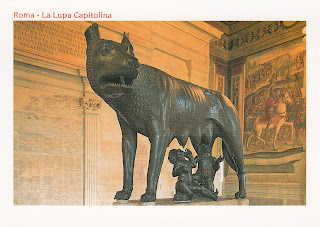Ancient Rome was one of the largest empires of the ancient World. Once the complete Mediterranean area was under Roman rule. The modern day countries of Albania, Algeria, Andorra, Armenia, Austria, Belgium, Bosnia and Herzegovina, Bulgaria, Crimea, Croatia, Czech Republic, Cyprus, Egypt, France, Germany, Georgia, Great Britain, Greece, Hungary, Iraq, Israel, Italy, Jordan, Lebanon, Liechtenstein, Luxembourg, Libya, Macedonia, Malta, Morocco, Monaco, Montenegro, Netherlands, Portugal, Romania, San Marino, Serbia, Slovakia, Slovenia, Spain, Switzerland, Syria, Tunisia, Turkey and Vatican belonged at least in parts to the Roman Empire. The Empire existed for more than 1000 years and its remains can still be seen today in its former territory.
According to the legend Rome was founded in BCE 753 by Romulus, who introduced the monarchy. Romulus and his brother Remus were the sons of Mars, the Roman God of War, and Rhea Silvia. They were later abandoned in the Tiber, breastfed by a wolf and nursed by a shepherd.
The Senate had it seat at the Forum Romanum, the heart of Ancient Rome and the centre of Roman public life. Today it is one of the most important excavation sites about Ancient Rome.
A famous monument from this time is the Colosseum. The construction was started in 72 by the Roman Emperor Vespasian. He want to ingratiate oneself with the people while staging panem et circenses (Bread and Games). His son Titus finished the construction. Inside was enough space for 50000 viewers. It is one of the 7 New Wonders of the World.
Under the rule of Trajan the Roman Empire reached its largest expansion. Due to external pressure starting in the 3rd century the Romans became more and more impatient with the government. With the Edict of Milan, issued in 313, the Christianity was admitted.
 |
| Arch of Constantine commemorating the victory of Constantin the Great in the Battle of the Milvian Bridge in 312 |
After the fall of the Roman Empire Rome fell under the control of the Pope. In the 8th Century it became the capital of the Papal States, in 1871 of the Kingdom of Italy and in 1946 of modern day Italy. Since 1980 is the Historic Centre of Rome on the UNESCO World Heritage List.




No comments:
Post a Comment